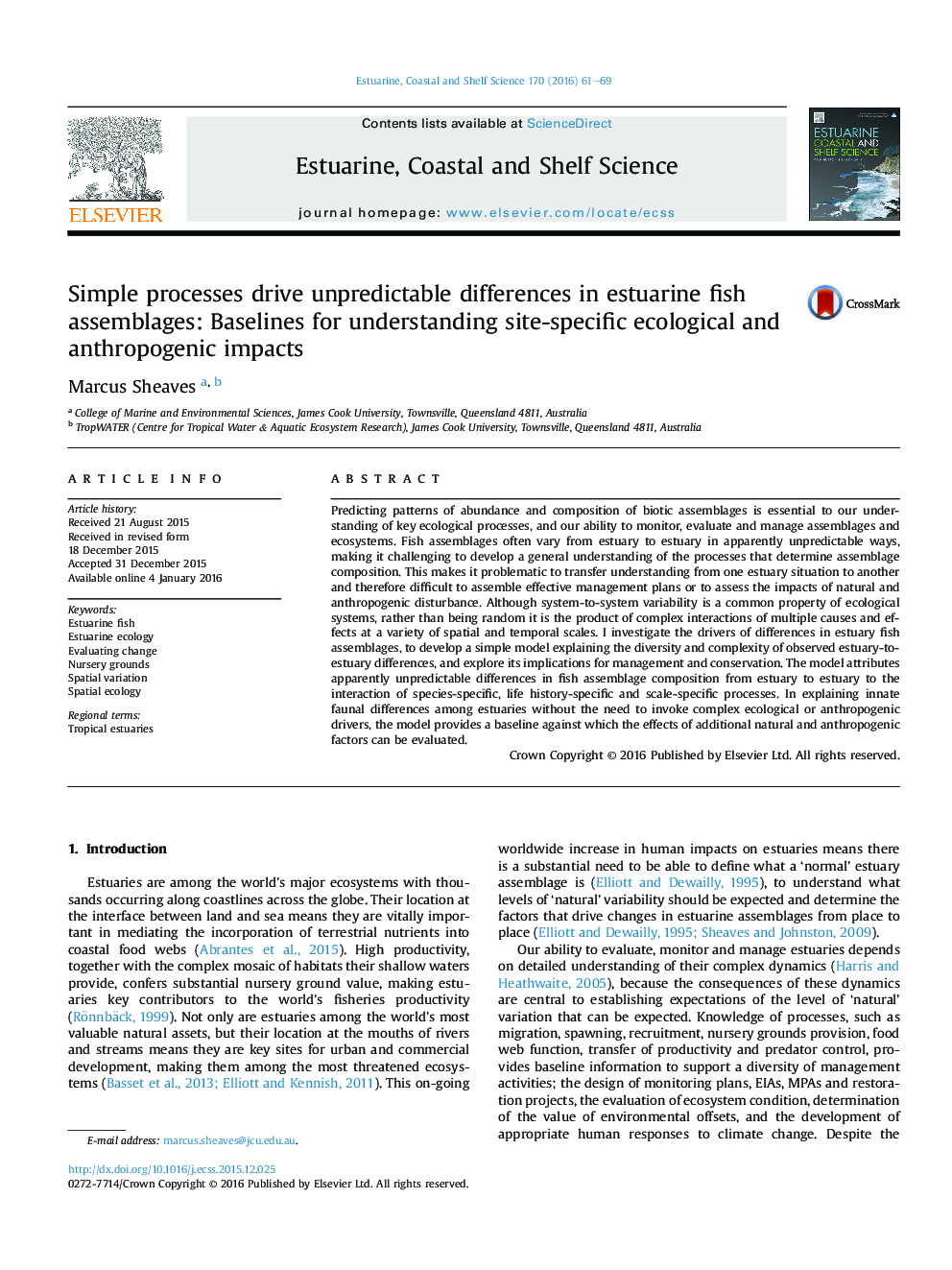| Article ID | Journal | Published Year | Pages | File Type |
|---|---|---|---|---|
| 4539249 | Estuarine, Coastal and Shelf Science | 2016 | 9 Pages |
•Fish assemblages vary from estuary to estuary in apparently unpredictable ways.•Much variation can be explained by life-histories and estuary spatial arrangement.•This understanding provides a baseline for evaluating natural or human effects.
Predicting patterns of abundance and composition of biotic assemblages is essential to our understanding of key ecological processes, and our ability to monitor, evaluate and manage assemblages and ecosystems. Fish assemblages often vary from estuary to estuary in apparently unpredictable ways, making it challenging to develop a general understanding of the processes that determine assemblage composition. This makes it problematic to transfer understanding from one estuary situation to another and therefore difficult to assemble effective management plans or to assess the impacts of natural and anthropogenic disturbance. Although system-to-system variability is a common property of ecological systems, rather than being random it is the product of complex interactions of multiple causes and effects at a variety of spatial and temporal scales. I investigate the drivers of differences in estuary fish assemblages, to develop a simple model explaining the diversity and complexity of observed estuary-to-estuary differences, and explore its implications for management and conservation. The model attributes apparently unpredictable differences in fish assemblage composition from estuary to estuary to the interaction of species-specific, life history-specific and scale-specific processes. In explaining innate faunal differences among estuaries without the need to invoke complex ecological or anthropogenic drivers, the model provides a baseline against which the effects of additional natural and anthropogenic factors can be evaluated.
Graphical abstractFigure optionsDownload full-size imageDownload high-quality image (501 K)Download as PowerPoint slide
